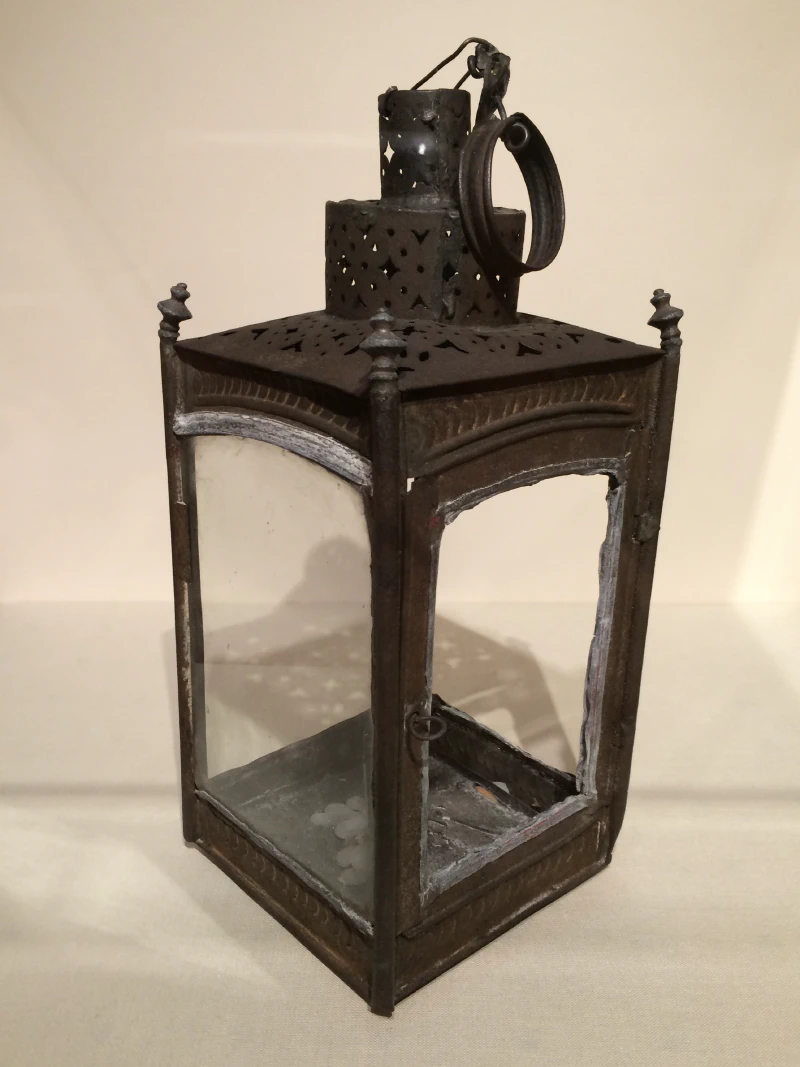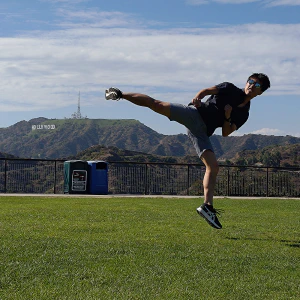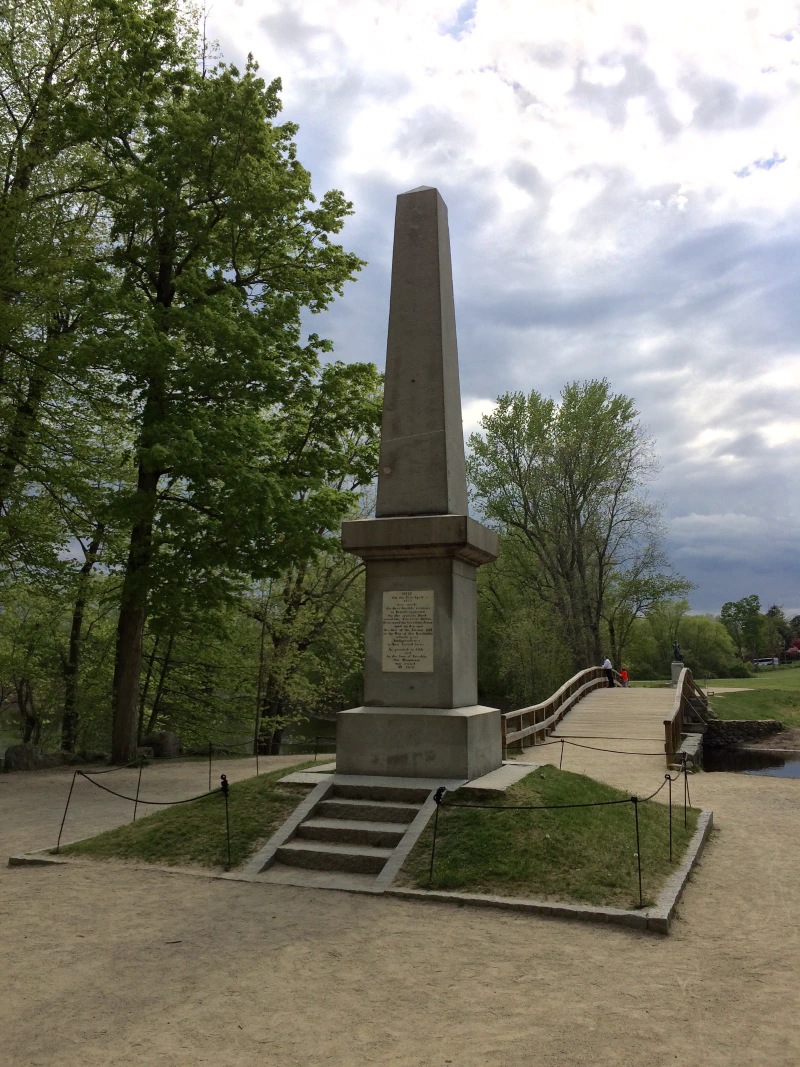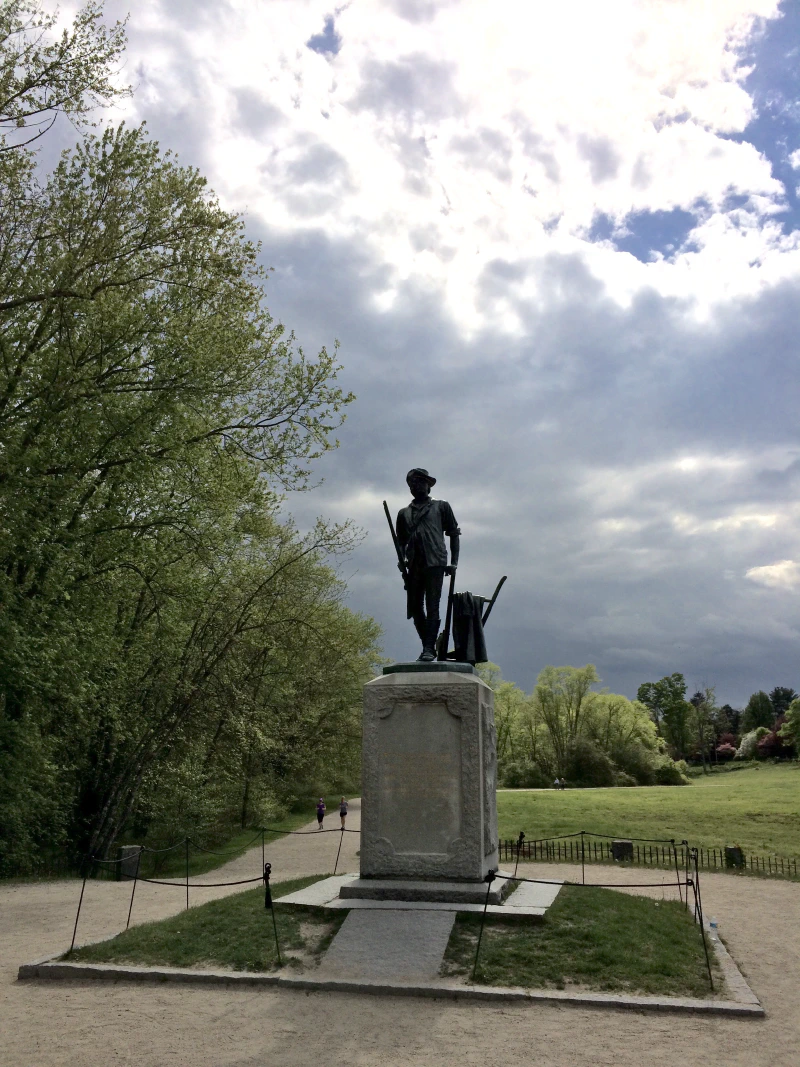Posted
on
in
New England Trip
• 1348 words
• 7 minute read
Tags:
Boston, Chinatown, Concord, Lexington, Massachusetts, Midinight Ride, Minutemen, MIT, Paul Revere, Trail, Travel
TL;DR We went to Lexington and Concord.
Starting Out
Our first order of business after we woke up was to eat breakfast. There is a Bruegger’s Babel store on the same street as our hotel. After a bagel, we rode the Red line subway to Cambridge. We walked over to the car rental place and got our car. Then mom drove up to Lexington (I would have driven, but it’s illegal). Our first stop was the Minute Man Visitor Center. We watched a short film that explained the events of the Battle of Lexington and Concord.
History
Side note: If you don’t like history, then you don’t like your life because whatever you just did is now history.
The Brtish were marching to capture a store of military supplies in Concord. Everyone knows the classic Paul Revere’s Ride poem by Henry Wadsworth Longfellow which tells the tale of Paul Revere alerting the countryside of the impending British march.
Listen my children and you shall hear
Of the midnight ride of Paul Revere,
On the eighteenth of April, in Seventy-five;
Hardly a man is now alive
Who remembers that famous day and year.
He said to his friend, “If the British march
By land or sea from the town to-night,
Hang a lantern aloft in the belfry arch
Of the North Church tower as a signal light,–
One if by land, and two if by sea;
And I on the opposite shore will be,
Ready to ride and spread the alarm
Through every Middlesex village and farm,
For the country folk to be up and to arm.”
… more verses that are way less famous
There are quite a few historical inaccuracies in the writing of Longfellow (he was writing it mainly propaganda to encourage people to sign up for the Union in the Civil War so historical accuracy was not at the forefront). First, Paul Revere was not the only one to ride that night. William Dawes also left Boston at the same time as Revere but by a different route. They met Samuel Prescott, a Concord native who was travelling home from Lexington, and it was he who actually delivered the message to the Concord Militia that the British Regulars were coming.
Paul Revere and William Dawes were actually apprehended by an advance British patrol. The only reason they didn’t blow Paul Revere’s head off was that he was unarmed. Revere and Dawes told the patrol that they had alerted the countryside of the British troop movement and after a few hours, the patrol released Revere and Dawes (minus their horses) and rode to alert the main body of soldiers that the surprise attack was not a surprise.
The British marched anyway. When they arrived in Lexington, a group of 70 militiamen were assembled in Lexington Green. The militia consisted of every man between the ages of 16 and 60. The British could have passed by the green and continued down the street towards Concord but instead they marched onto the green and ordered the militia to disband. By all accounts, the militia did obey and disband, but someone, nobody knows who or what side they were on, fired a shot. A British volley followed and when the smoke cleared and the British officers restored order, 8 militiamen were killed and 10 others wounded.
The British continued their march to Concord. The Concord Militia assembled on a hill on the North side of the town. The British marched into Concord and some went to guard the South Bridge. A few went to guard the North Bridge and some even crossed the North Bridge to search a farm on the other side. The militia held the hill, but did not provoke the Regulars.
Then, the militia saw smoke rising from the town of Concord. The British were burning supplies but the militia thought that they had set fire to the town. Someone said “will you let them burn the town down?” and the militia marched towards North Bridge. The British charged with guarding the bridge were outnumbered. The militiamen began across the bridge but were fired upon by the British. The captain of the militia ordered “Fire, for God’s sake, fellow soldiers, fire”. This was the first time Americans were ordered to fire upon British troops.
The British withdrew from Concord. They never captured the military stores. A running battle ensued as the British marched back to Charlestown and the cover of British warships in the Boston Harbor. It was during the march that the British suffered the vast majority of their casualties. The Lexington Militia stationed themselves at a bend in the road and made got revenge for the killings earlier that day.
Much later, the area between Lexington and Concord became one of the main centers of Transcendentalism, a cult which believed that to find God, you must first find your follow your “inner light”. Famous figures such as Ralph Waldo Emerson, Henry David Thoreau, Walt Whitman, Nathaniel Hawthorne, and Louisa May Alcott all lived or visited the area.
What We Actually Saw
There is a national park which runs along most of the road where the British marched. We started out at the visitor center of the park. We then backtracked to Lexington Green and walked around the town taking pictures and visiting a tavern where the Minutemen waited for the British troops to arrive.
We then continued through the park stopping at various interesting sites including a few historic houses and house sites, the site of Paul Revere’s capture and a few other interesting sites. One such site was Louisa May Alcott’s house, the house where Little Women is set. I have no idea anything about Little Women, but I humored mom and went on the tour. I was not alone, the other men on the tour seemed like they were humoring their wives as well.
On the other side of the park is a museum, the Museum of Concord. We stopped here as well. The coolest thing in the museum was one of the lanterns hung in the Old North Church.

After the museum we proceeded to the North Bridge. There is a monument to the British Regulars who died at the bridge as well as a monument to the Minutemen who died that day. On the monument to the British, something to the effect of
Here the British came 3000 miles and died. Back home their mother’s cried
or something like that. The Minutemen statue is much nicer.
Memorial to the British who Died at the North Bridge | The Minutemen Statue on the other side of the North Bridge |
At this point, we headed back to Charlestown and returned the car.
MIT
We were super close to MIT, so we decided to walk around the campus and kinda see what it’s like. There weren’t many people because it’s between the Spring and Summer semesters. We did get to see a few different buildings though and we walked inside the halls of one (I don’t know if were allowed to do that, but we did anyway).
Chinatown
We were pretty hungry so we hopped on the subway and went to Chinatown, closer to the center of Boston. We found a very authentic Chinese restaurant. We judge authenticity by the number of Asian locals eat at the restaurant and the number of menu items that are listed only in Chinese. When we arrived, mom was the one of only three non-Asians in the restaurant and there were entire sections of the menu that were untranslated. (Probably the stuff that they didn’t think that Americans would want to know were available to eat.) After ordering our food, they also brought mom a fork. Not me (they assumed that I knew how to use chopsticks), just mom. (Mom didn’t need them either, but we thought it was amusing that as soon as they saw a white person, they brought a fork.)
After we ate, we headed back to the hotel where I worked on my blog.


